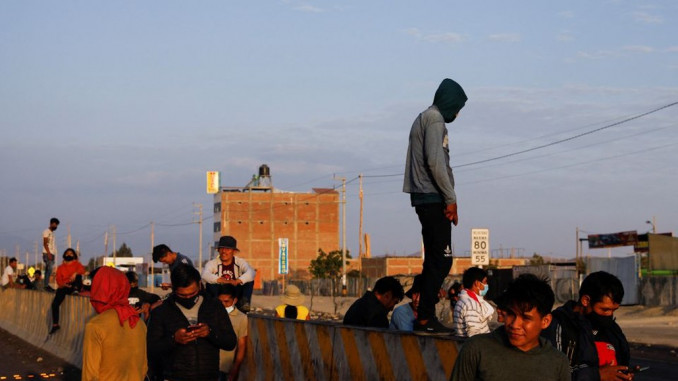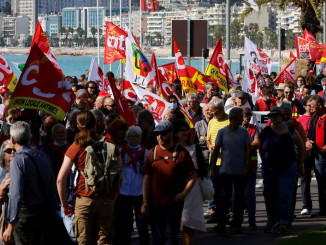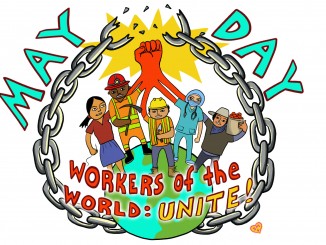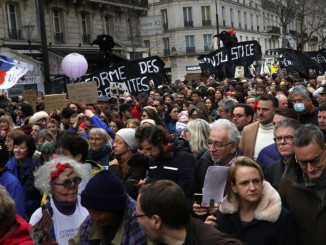
The Russian invasion of Ukraine has had a dramatic impact around the world, due to the disruption of international trade and access to resources. Half a world away, in Peru, the Russian invasion has disrupted agricultural output on a huge scale. Peru is a country already suffering from massive inequality, corruption, and poverty. The consequences of decreased access to food and fuel have fallen, most dramatically, on poor and working-class people. The economic consequences of the Ukraine war in Peru show how the world is fundamentally connected, and war is not simply a far-away event, no matter where in the world we look.
The Russian invasion of Ukraine in February was accompanied by a naval blockade of Ukraine’s ports on the Black Sea. Ukraine is responsible for nine percent of the world’s wheat, 16 percent of its corn, and 42 percent of its sunflower oil. In addition, Russia itself is the source of a quarter of the world’s natural gas. The combination of disrupted trade, diminished access to resources, and sanctions has caused prices to rise dramatically. For a country like Peru, this is a catastrophe, as 70 percent of Peru’s wheat supply comes from Ukraine, and 70 percent of its fertilizers as well, derived from Russian natural gas. Not only are immediate food supplies cut off for Peru, but domestic agricultural output – rice, potatoes, and corn – is set to fall by 40%. In a recent speech, the United Nations World Food Program Director David Beasley called this situation “hell on earth.”
Inequality in Peru is extreme. Peru is the second-largest producer of copper and silver, the third-largest producer of lead, and the eighth-largest producer of gold in the world. These resources are exploited primarily by international corporations, which take advantage of widespread government corruption to obtain access. Massive international investment, facilitated by the Peruvian government, has led to a boom in the Peruvian economy in the last 20 years. While the urban population benefited, and the middle class has seen its position improve, the rural majority has lost out. Peru’s rural poverty rate is nearly 50 percent, and 15 percent of children suffer from malnutrition. The expansion of mining has devastated the water supply, especially in the rural areas.
The limited benefits of economic growth in the last decades were almost completely reversed by the economic crisis caused by the COVID pandemic. In a country of just 32 million people, 200,000 died of COVID, the most deaths per capita in the world. Peru’s economy contracted by 12 percent in 2020, and thousands of people were thrown into poverty and unemployment. Two million people immediately fell below the poverty line, while many more suffered a decline in their living standards. The government of President Martin Vizcarra, rather than address the situation, directed the money allocated for COVID treatment and relief to his friends and cronies in the corrupt government. The President and the well-connected elite took advantage of access to vaccines to illegally vaccinate themselves before any treatment was available to the Peruvian people. As a consequence of Vizcarra’s unpopularity, in 2020 his government collapsed.
Today, the Peruvian presidency is held by Pedro Castillo, from the Peru Libre party. Castillo is a newcomer, not a member of the Peruvian political elite. Before becoming president, Castillo was a primary school teacher. He became well-known in 2017 as a leader of a major teachers’ strike in the region of Cajamarca. His party, Peru Libre, is a small left-wing party which claims to be socialist. Castillo was elected to the presidency in 2021 after the collapse of the Vizcarra government.
Based on his party’s program, Castillo had promised to create widespread public services, end political corruption, and impose public ownership of natural resources, especially Peru’s valuable mineral resources. The profits from these resources could and should have been made available to help the Peruvian people climb out of desperate poverty, but the Castillo government proved unwilling and incapable of carrying through its promises.
Once in power, Castillo’s administration was immediately made a tool of the wealthy elite and international corporate interests. Castillo’s government carried out the same policies as his predecessors, and maintained the private ownership of mineral resources that underpins the country’s inequality. In April 2022, the rising food prices and fuel prices sparked a widespread protest movement with tens of thousands of poor Peruvians taking to the streets. Rather than mobilize resources to come to people’s assistance, the Castillo government sent the police to crush the demonstrations, declared a state of emergency, and imposed a curfew. Six people were killed in clashes with the police. These actions were so shameful that Castillo’s party, Peru Libre, disowned him and he left the party in July 2022. Today, Castillo’s government is hanging on by a thread, and may collapse at any moment.
The economic, social and political crisis in Peru shows that, just like the COVID pandemic, the war in Ukraine touches the lives of people around the world. While humanity is divided and ruled by the governments of various nation-states, we are all bound together in a global economy. The ruling elite and their governments, whether in Russia or Peru, are representatives of the self-interested wealthy. Their actions throw the world into chaos, and we are the ones who pay the price. We need another solution based on global solidarity and cooperation. The Castillo government in Peru shows the impossibility of solving social and economic problems by occupying the seats of power in the existing governments. We need to change the system entirely, so that poor and working people are in direct control. Then we can begin to solve the crises caused by the system on a global scale.




